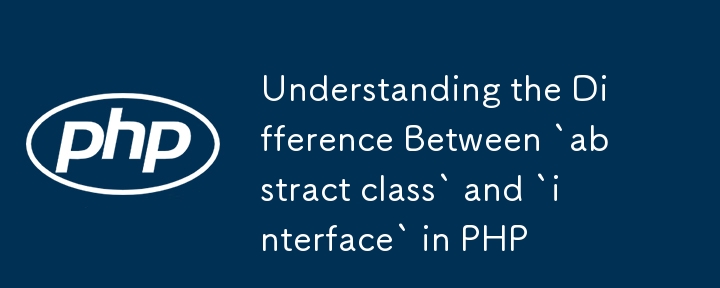Found a total of 10000 related content
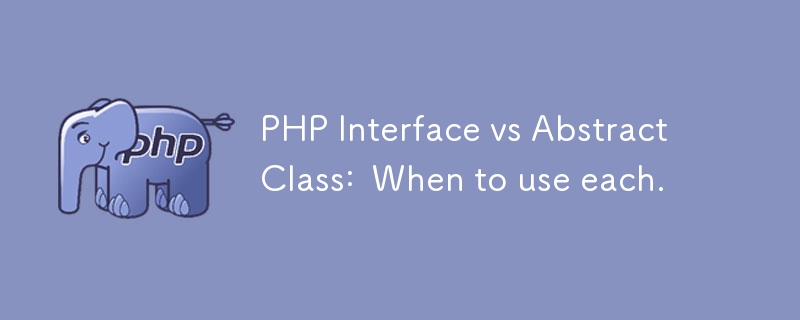
PHP Interface vs Abstract Class:?When to use each.
Article Introduction:The article discusses the use of interfaces and abstract classes in PHP, focusing on when to use each. Interfaces define a contract without implementation, suitable for unrelated classes and multiple inheritance. Abstract classes provide common funct
2025-03-26
comment 0
1031

A Crash Course of Changes to Exception Handling in PHP 7
Article Introduction:Major improvements in exception handling in PHP 7
PHP 7 has made significant improvements to exception handling, introducing the Throwable interface and the Error class, which significantly enhances error handling capabilities. The Throwable interface is the base interface of the Exception and Error classes, allowing developers to catch all throwable errors, whether exceptions or errors. The Error class handles various internal PHP errors, including fatal errors and type errors, and is broken down into four subclasses: ArithmeticError, TypeError, ParseError, and AssertionError.
Throwable interface
Th
2025-02-10
comment 0
1162

How to Access API Responses Using cURL in PHP?
Article Introduction:This article presents a technique for integrating external API functionality into PHP applications using cURL, a PHP library. It demonstrates the creation of a standalone PHP class for API invocation with cURL, facilitating response acquisition and i
2024-10-24
comment 0
1214
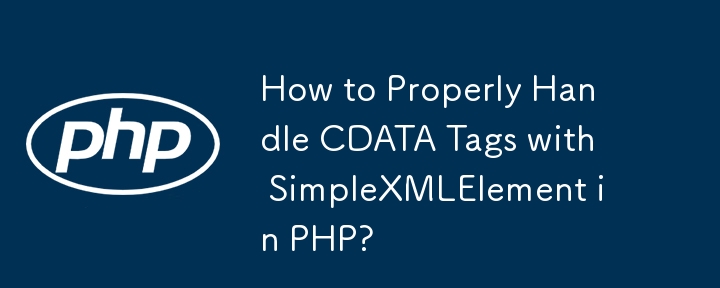
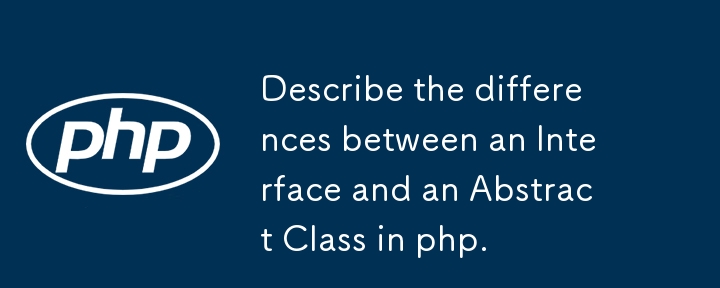
Describe the differences between an Interface and an Abstract Class in php.
Article Introduction:Interfaces define behavioral specifications, and abstract classes provide partial implementations. The interface only defines methods but does not implement them (PHP8.0 can be implemented by default), supports multiple inheritance, and methods must be public; abstract classes can contain abstract and concrete methods, support single inheritance, and members can be protected or public. Interfaces are used to unify behavioral standards, realize polymorphism, and multiple inheritance; abstract classes are used to encapsulate public logic and share partial implementations. Selection basis: Use interfaces when you need to flexibly define behaviors, and use abstract classes when you need to share logic.
2025-07-08
comment 0
490

How to Get API Responses Using cURL in PHP?
Article Introduction:This article demonstrates how to retrieve API responses using cURL in PHP. It provides a standalone class with a function to call an API via cURL and obtain the response. The function handles various cURL options, including return transfer, header su
2024-10-25
comment 0
391

What is the difference between an abstract class and an interface in PHP?
Article Introduction:The main difference between an abstract class and an interface is that an abstract class can contain the implementation of a method, while an interface can only define the signature of a method. 1. Abstract class is defined using abstract keyword, which can contain abstract and concrete methods, suitable for providing default implementations and shared code. 2. The interface is defined using the interface keyword, which only contains method signatures, which is suitable for defining behavioral norms and multiple inheritance.
2025-04-08
comment 0
1143
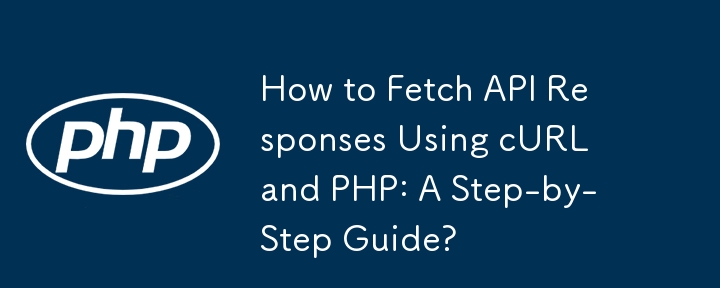
How to Fetch API Responses Using cURL and PHP: A Step-by-Step Guide?
Article Introduction:This article provides a code snippet for a PHP class that utilizes cURL to fetch API responses. The snippet defines a function to retrieve the API response, handle redirects, set user agent, and manage timeouts, making it a useful tool for interactin
2024-10-26
comment 0
1108

PHP Master | Working with Slim Middleware
Article Introduction:Slim Framework Middleware: Building Powerful PHP Micro Applications
Slim is a powerful PHP mini framework, where middleware features allow implementation of various filter-style services such as authentication and caching in applications. Middleware encapsulates applications and can affect the application's environment as well as request and response objects.
Key points:
Slim's middleware is a powerful feature that allows the implementation of various filter-style services such as authentication and caching. Middleware encapsulates applications and can affect the application's environment, request and response objects.
To implement middleware in Slim, you need to write a class that extends the SlimMiddleware class and overrides the call() method. This method is
2025-02-24
comment 0
643

When would you use a trait versus an abstract class or interface in PHP?
Article Introduction:In PHP, trait is suitable for situations where method reuse is required but not suitable for inheritance. 1) Trait allows multiplexing methods in classes to avoid multiple inheritance complexity. 2) When using trait, you need to pay attention to method conflicts, which can be resolved through the alternative and as keywords. 3) Overuse of trait should be avoided and its single responsibility should be maintained to optimize performance and improve code maintainability.
2025-04-10
comment 0
965

What are interfaces in PHP?
Article Introduction:Interfaces are used in PHP to define contracts that classes must follow, specifying methods that classes must implement, but do not provide specific implementations. This ensures consistency between different classes and facilitates modular, loosely coupled code. 1. The interface is similar to a blueprint, which specifies what methods should be used for a class but does not involve internal logic. 2. The class that implements the interface must contain all methods in the interface, otherwise an error will be reported. 3. Interfaces facilitate structural consistency, decoupling, testability and team collaboration across unrelated classes. 4. Using an interface is divided into two steps: first define it and then implement it in the class. 5. Classes can implement multiple interfaces at the same time. 6. The interface can have constants but not attributes. PHP7.4 supports type attributes but is not declared in the interface. PHP8.0 supports named parameters to improve readability.
2025-06-23
comment 0
331

What is the use of the << operator in PHP?
Article Introduction:In PHP, implementing polymorphism can be achieved through method rewriting, interfaces, and type prompts. 1) Method rewriting: Subclasses override parent class methods and perform different behaviors according to object type. 2) Interface: The class implements multiple interfaces to realize polymorphism. 3) Type prompt: Ensure that the function parameters are specific to the type and achieve polymorphism.
2025-05-20
comment 0
1136
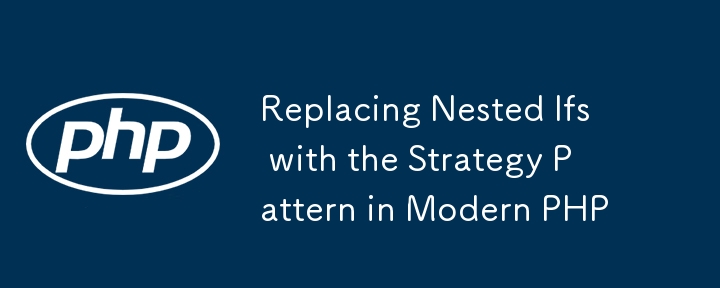
Replacing Nested Ifs with the Strategy Pattern in Modern PHP
Article Introduction:To replace nested if statements in PHP, you should use the policy pattern, 1. Define the policy interface; 2. Create a specific policy class; 3. Use context class to manage policies; 4. Select and execute corresponding policies through type selection and execution, thereby improving the maintainability, testability and scalability of the code, and ultimately achieving a clear and decoupled design.
2025-08-07
comment 0
867
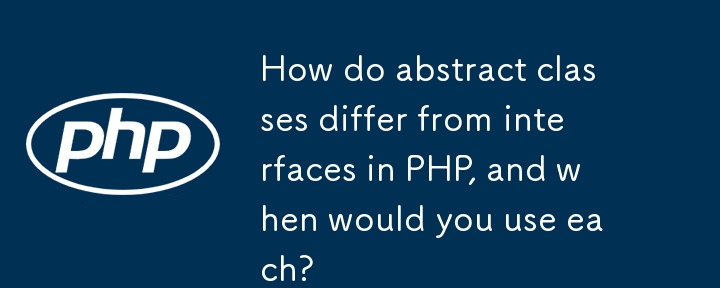
How do abstract classes differ from interfaces in PHP, and when would you use each?
Article Introduction:Abstract classes and interfaces have their own uses in PHP. 1. Abstract classes are used to share code, support constructors and control access, and include abstract methods and concrete methods. 2. The interface is used to define behavior contracts. All methods must be implemented and are public by default, and support multiple inheritance. 3. Since PHP8, the interface can contain default methods to implement, but there is still no constructor or state. 4. When using abstract classes, you need to encapsulate implementation details; when using interfaces, you need to define cross-class behavior or build plug-in systems. 5. Can be used in combination: abstract classes implement interfaces or combine multiple interfaces into one abstract class. Select whether the structure plus sharing behavior (abstract class) or only the structure (interface).
2025-06-04
comment 0
1147
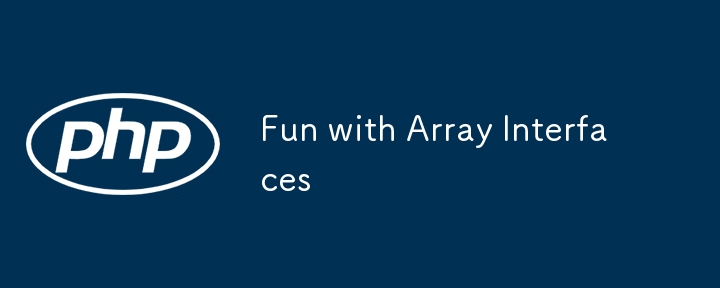
Fun with Array Interfaces
Article Introduction:Key Points
PHP's array interface allows programmers to simulate the characteristics of native data types in custom classes, similar to Python's methods. This enables custom classes to work like arrays and allows common array operations such as counting elements, looping through elements, and accessing elements through indexes.
An interface is like a contract for a class, specifying the methods that a class must contain. They allow encapsulation of implementation details and provide syntax sugar, thereby improving the readability and maintainability of the code. PHP provides a library of predefined interfaces that can implement these interfaces to make objects similar to arrays.
Countable, ArrayAccess and Iterator interfaces in PHP allow objects to pass cou respectively
2025-02-22
comment 0
533
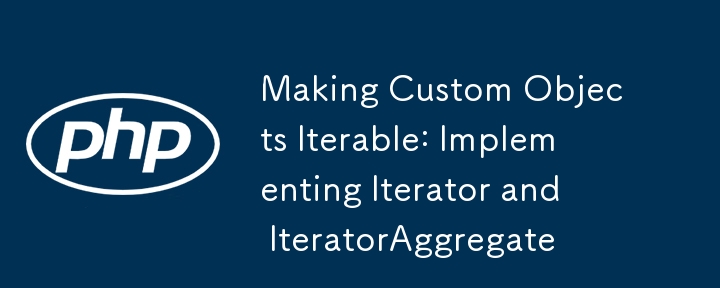
Making Custom Objects Iterable: Implementing Iterator and IteratorAggregate
Article Introduction:To make PHP custom objects available in foreach, you need to implement the Iterator or IteratorAggregate interface. 1. Use the Iterator interface to implement five methods: current(), key(), next(), return() and valid(). It is suitable for scenarios where fine control of the iteration process is required, as shown in the TaskList class example; 2. Use the IteratorAggregate interface to implement the getIterator() method and return a Traversable object (such as ArrayIterator), which is suitable for scenarios where existing data is simply wrapped, such as TaskCollec
2025-08-05
comment 0
683

Laravel error and exception handling
Article Introduction:Laravel's error and exception handling mechanism is based on the PHP exception system and Symfony component, and is managed by the App\Exceptions\Handler class. 1. Record exceptions through the report() method, such as integrating Sentry and other monitoring services; 2. Convert exceptions into HTTP responses through the render() method, supporting custom JSON or page jumps; 3. You can create custom exception classes such as PaymentFailedException and define their response format; 4. Automatically handle verification exception ValidationException, and manually adjust the error response structure; 5. Decide whether to display details based on the APP_DEBUG configuration.
2025-07-31
comment 0
748

How do you implement custom session handling in PHP?
Article Introduction:Implementing custom session processing in PHP can be done by implementing the SessionHandlerInterface interface. The specific steps include: 1) Creating a class that implements SessionHandlerInterface, such as CustomSessionHandler; 2) Rewriting methods in the interface (such as open, close, read, write, destroy, gc) to define the life cycle and storage method of session data; 3) Register a custom session processor in a PHP script and start the session. This allows data to be stored in media such as MySQL and Redis to improve performance, security and scalability.
2025-04-24
comment 0
736
